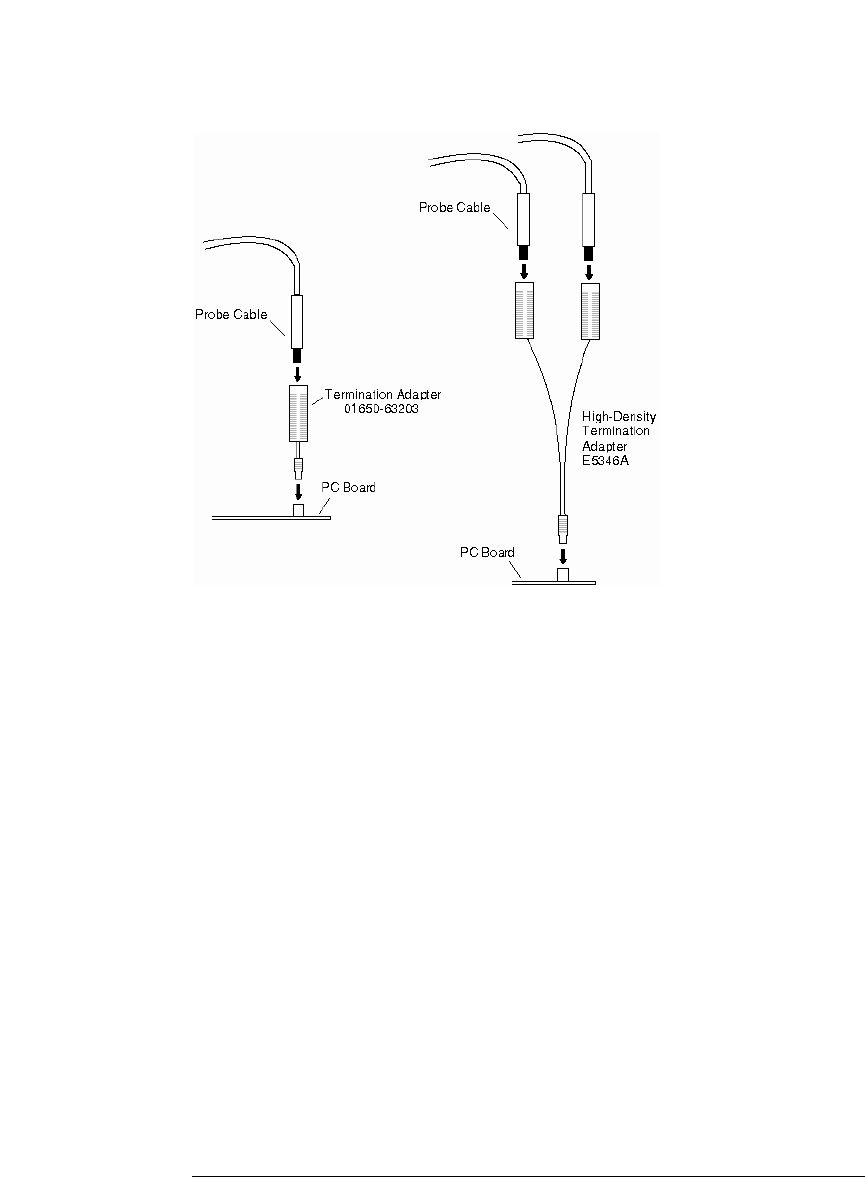User's Manual
Table Of Contents
- Agilent Technologies 16750A/B Logic Analyzer
- Agilent Technologies 16750A/B Logic Analyzer
- Contents
- Getting Started
- Step 1. Connect the logic analyzer to the device under test
- Step 2. Choose the sampling mode
- Step 3. Format labels for the probed signals
- Step 4. Define the trigger condition
- Step 5. Run the measurement
- Step 6. Display the captured data
- For More Information...
- Example: Timing measurement on counter board
- Example: State measurement on counter board
- Task Guide
- Probing the Device Under Test
- Choosing the Sampling Mode
- To select transitional timing or store qualified
- Formatting Labels for Logic Analyzer Probes
- Setting Up Triggers and Running Measurements
- Displaying Captured Data
- Using Symbols
- Printing/Exporting Captured Data
- Cross-Triggering
- Solving Logic Analysis Problems
- Saving and Loading Logic Analyzer Configurations
- Reference
- The Sampling Tab
- The Format Tab
- Importing Netlist and ASCII Files
- The Trigger Tab
- The Symbols Tab
- Error Messages
- Must assign Pod 1 on the master card to specify actions for flags
- Branch expression is too complex
- Cannot specify range on label with clock bits that span pod pairs
- Counter value checked as an event, but no increment action specified
- Goto action specifies an undefined level
- Maximum of 32 Channels Per Label
- Hardware Initialization Failed
- Must assign another pod pair to specify actions for flags
- No more Edge/Glitch resources available for this pod pair
- No more Pattern resources available for this pod pair
- No Trigger action found in the trace specification
- Slow or Missing Clock
- Timer value checked as an event, but no start action specified
- Trigger function initialization failure
- Trigger inhibited during timing prestore
- Trigger Specification is too complex
- Waiting for Trigger
- Analyzer armed from another module contains no "Arm in from IMB" event
- Specifications and Characteristics
- Concepts
- Understanding Logic Analyzer Triggering
- Understanding State Mode Sampling Positions
- Getting Started
- Glossary
- Index

34
Chapter 2: Task Guide
Probing the Device Under Test
Adapter-to-Board
Connection
Both the 01650-63203 and the E5346A adapters include termination
for the logic analyzer. The 01650-63203 termination adapter plugs into
a 2 x 10 pin header with 0.1 inch spacing. The E5346A high-density
adapter connects to an AMP "Mictor 38" connector. If possible, use
support shrouds around the Mictor connector to relieve strain and
improve connections.
Direct Pod-to-Board
Connection
If you provide proper termination as part of the device under test
board, you can plug the pod directly into the ©3M 2520-series, or
similar alternative connector. Suggested termination is shown in the
Logic Analysis System and Measurement Modules Installation
Guide.
Also use this termination with the Agilent Technologies E5351A high-
density, non-terminated adapter.
Pod-to-Analysis
Probe Connection
Analysis probes (formerly called preprocessors) are microprocessor-
specific interfaces that make it easier to probe buses. Generally,
analysis probes consist of a circuit board that attaches to the
microprocessor (possibly through an adapter) and a configuration file.
The configuration file sets up the logic analyzer's clocks and labels










